This pub is named after the ceremonial character whose job, originally, was to beat a path through the crowd for the Lord Mayor and his entourage – and to protect them from harm.
Illustrations and text about a Whiffler.
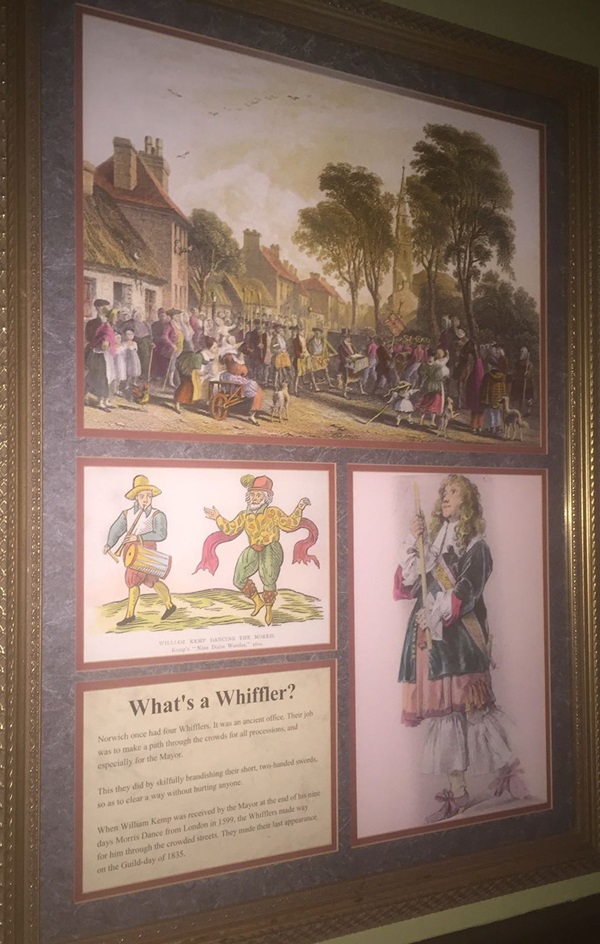
The text reads: Norwich once had four Whifflers. It was an ancient office. Their job was to make a path through the crowds for all processions, and especially for the Mayor.
This they did by skilfully brandishing their short, two-handed swords, so as to clear a way without hurting anyone.
When William Kemp was received by the Mayor at the end of his nine days Morris Dance from London in 1599, the Wifflers made way for him through the crowded streets. They made their last appearance on the Guild-day of 1835.
Illustrations and text about Robert Kett’s rebellion.
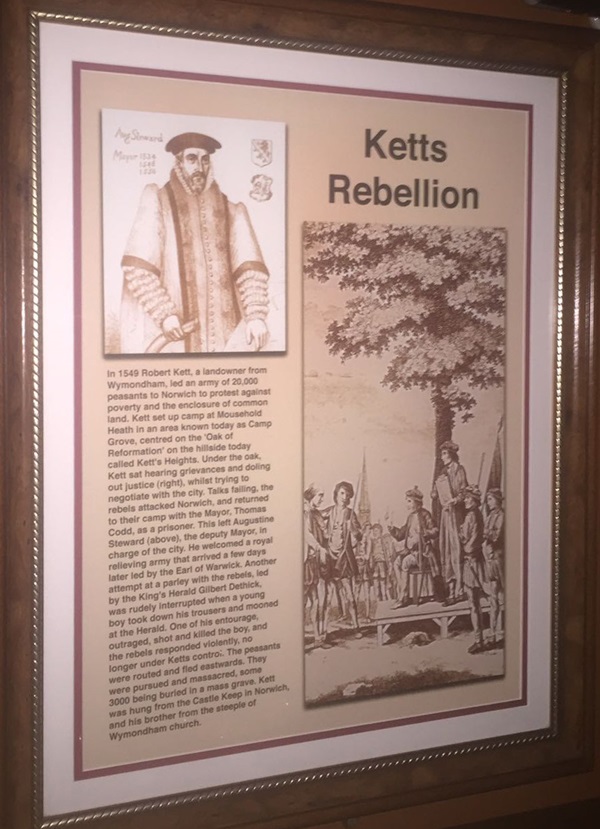
The text reads: In 1548 Robert Kett, a landowner from Wymondham, led an army of 20,000 peasants to Norwich to protest against poverty and the enclosure of common land. Kett set up camp at Mousehold Heath in an area known today as Camp Grove, centred on the Oak of Reformation on the hillside today called Kett’s Heights. Under the oak, Kett sat hearing grievances and dolling out justice (right), whilst trying to negotiate with the city. Talks failing, the rebels attacked Norwich, and returned to their camp with the Mayor, Thomas Codd, as a prisoner. This left Augustine Steward (above), the deputy Mayor, in charge of the city. He welcomed a royal relieving army that arrived a few days later led by the Earl of Warwick. Another attempt at a parley with the revels, led by the King’s Herald Gilbert Dethick, was rudely interrupted when a young boy took down his trousers and mooned at the Herald. One of his entourage, outraged, shot and killed the boy, and the rebels responded violently, no longer under Kett’s control. The peasants were routed and fled eastwards. They were pursued and massacred, some 3000 being buried in a mass grave. Kett was hung from the Castle Keep in Norwich, and his brother from the steeple of Wymondham church.
Prints and text about ancient crafts.
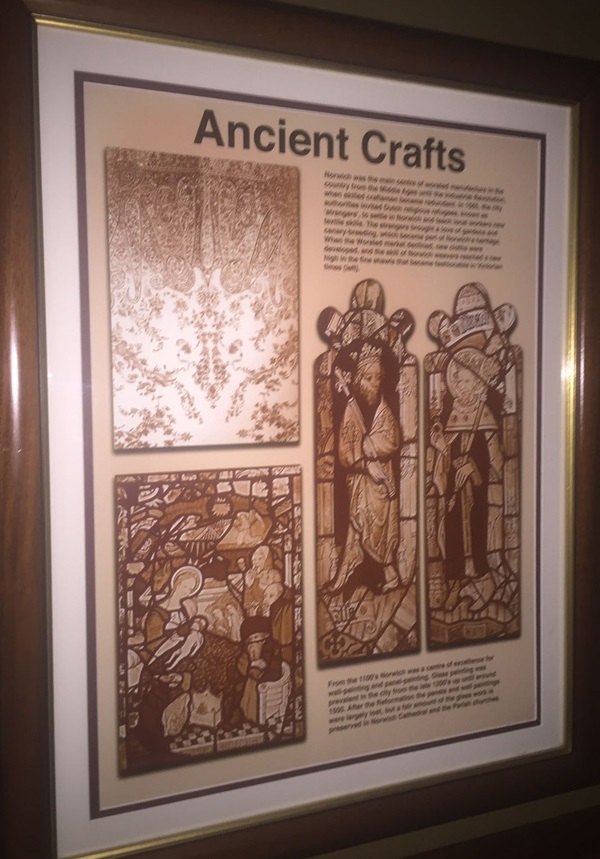
The text reads: Norwich was the main centre of worsted manufacture in the country from the Middle Ages until the Industrial Revolution, when skilled craftsmen became redundant. In 1565, the city authorities invited Dutch religious refugees, known as ‘strangers’, to settle in Norwich and teach local workers new textile skills. The strangers brought a love of gardens and canary-breeding, which became part of Norwich’s heritage. When the worsted market declined, new clothes were developed, and the skill of Norwich weavers reached a new high in the fine shawls that became fashionable in Victorian times (left).
From the 1100s Norwich was a centre of excellence for wall-painting and panel-painting. Glass painting was prevalent in the city from the late 1200s up until around 1500. After the Reformation the panels and wall paintings were largely lost, but a fair amount of the glass work is preserved in Norwich Cathedral and the Parish churches.
Prints and text about insurance and condiments.
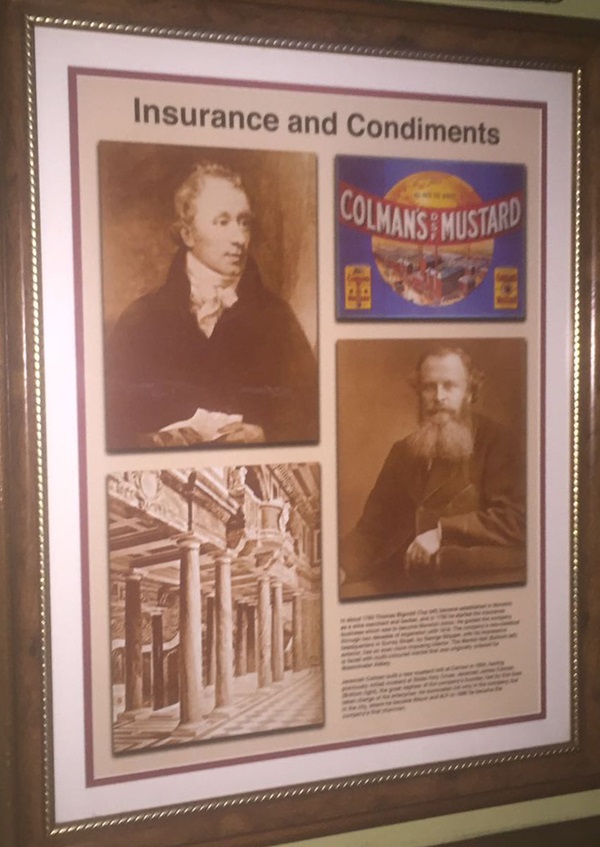
The text reads: In about 1783 Thomas Bignold (top left) became established in Norwich as a wine merchant and banker, and in 1792 he started the insurance business which was to become Norwich Union. He guided the company through two decades of expansion until 1818. The company’s neo-classical headquarters in Surrey Street, by George Skipper, with its impressive exterior, has an even more imposing interior. The Marble Hall (bottom left) is faced with multi-coloured marble that was originally ordered for Westminster Abbey.
Jeremiah Colman built a new mustard mill at Carrow in 1854, having previously milled mustard at Stoke Holy Cross. Jeremiah James Colman (bottom right), the great nephew of the company’s founder, had by this time taken charge of the enterprise. He dominated not only in the company, but in the city where he became Mayor and MP. In 1896 he became the company’s first chairman.
An illustration and text about Norwich Castle.
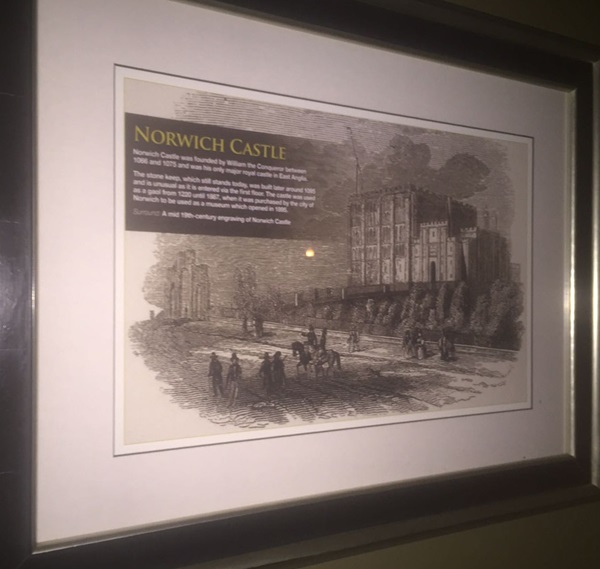
The text reads: Norwich Castle was founded by William the Conqueror between 1066 and 1075 and was his only major royal castle in East Anglia.
The stone keep, which still stands today, was built later around 1095 and is unusual as it is entered via the first floor. The castle was used as a gaol from 1220 until 1887, when it was purchased by the city of Norwich to be used as a museum which opened in 1895.
Surround: A mid-19th century engraving of Norwich Castle.
An illustration and text about Norwich Market Place.
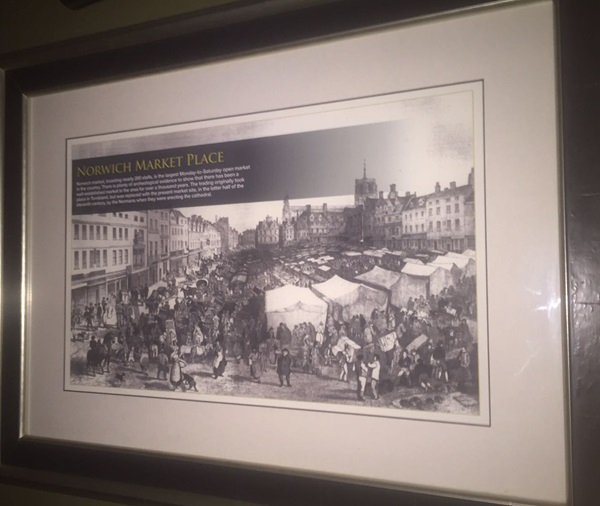
The text reads: Norwich market, boasting nearly 200 stalls, is the largest Monday-to-Sunday open market in the country. There is plenty of archaeological evidence to show that there has been a well-established market in the area for over a thousand years. The trading originally took place in Tomland, but was replaced with the present market site, in the latter half of the eleventh century, by the Normans when they were erecting the cathedral.
External photograph of the building – main entrance.
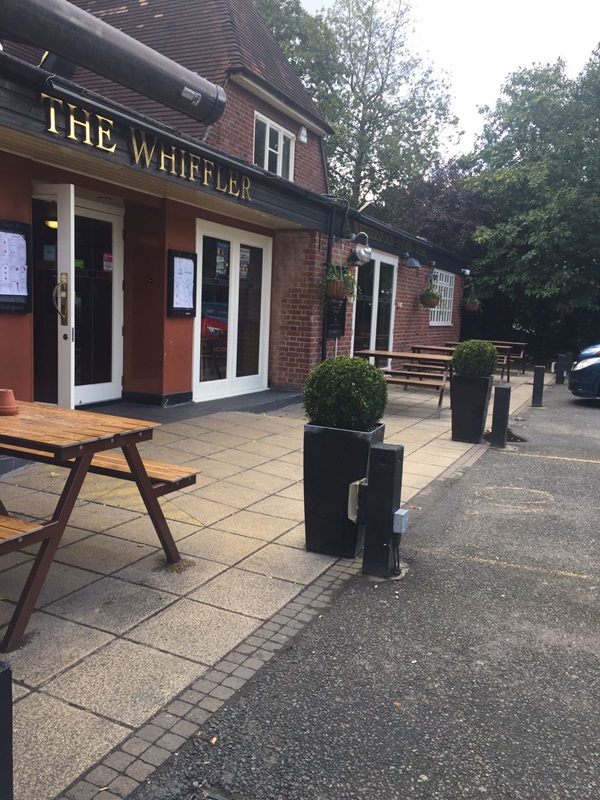
If you have information on the history of this pub, then we’d like you to share it with us. Please e-mail all information to: pubhistories@jdwetherspoon.co.uk